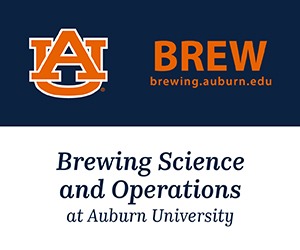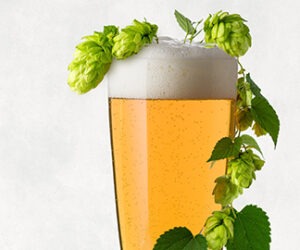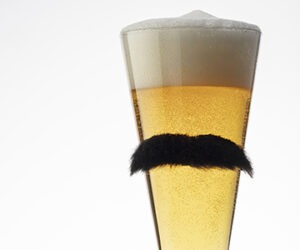British Bitter
Maybe it’s genetic. As much as I enjoy a good German lager, a Czech pils, or a Belgian abbey beer, nothing tugs at my heart like a good British bitter. I figure it’s the blood of all those working-class Nottingham souls calling for their “pint of bitter.”
Or maybe it’s the weather. Stouts, porters and barleywines have their place, warming damp bones here in Oregon, but there’s nothing quite as bracing as a solid jolt of intense hop bitterness on a cool evening. And there’s nothing quite as social as a round of bitter and a table filled with friends.
The truth is, while my British ancestors were undoubtedly ale drinkers, they weren’t ordering bitter before they left England in the 1920s. Although it has become the quintessential British beer, “bitter” didn’t become a notable style or common term until the years around WW2. The seminal British brewing text, H. L. Hind’s Brewing: Science & Practice, from the 1930s, never uses the term at all, although there are numerous references to pale ale. My ancestors may have been drinking “bitter” but they probably didn’t call it that.
“Bitter” seems to have emerged purely as a distinction from “mild” — both terms referring to the beer’s hopping rate, either low (mild) or high (bitter). In the days when the tied-house system assured that a pub carried only one brand, and each brewery offered drinkers such a choice, the distinction was simple. But defining “bitter” as anything but “not mild” is difficult — especially when milds have never been an American style and have faded badly even in England.
Regional preferences and distinct variations from brewery to brewery make over-precise definitions of bitter suspect. As the Guide to British Breweries notes: “…the type of drink which the definition covers is quite remarkable in its variety. Some bitters are dry and hoppy, others sweet and luscious.” The beers range widely in color as well, from pale gold to deep bronze, generally copper-colored, but they are always “pale,” which is to say, they are clear.
Although bottled and canned bitters exist (luckily for Americans), the term is usually reserved for draught versions and the purists know that only “real” cask-conditioned bitter is worthy of the name. “Real” bitter is served quite young — hitting its peak within a few days of leaving the brewery, at which point the cask is tapped and the beer consumed within a day or two.
The key to the style is simple: bitter. The beer must have a liberal dose of bittering hops, which not only assure an assertive bitterness but a foundation of hop flavor. The beer may or may not have much hop aroma, but it should always have a bite at least as formidable as its bark.
As the style grew in popularity, breweries often produced several versions in varying strengths. The basic or “ordinary” bitter (about 1.035) evolved for several reasons. A low-gravity “session” beer offers the chance to stay upright through long evenings or drinking, a social norm in England where something like 85% of beer is sold in pubs.
Taxes are an important factor, as well. British beers are taxed at the brewery, on a scale determined by the Original Gravity (OG). Beers brewed to an OG of 1.035 can be sold for much less than those at 1.045 (more in line with an American ale).
And, as Michael Jackson notes in The New World Guide to Beer, “that hop-acid bitterness cannot emerge so well in a bigger ale.” The trick, the British brewers gift, is to be able to produce a low-gravity beer that isn’t insipid, but rather full of flavor — the flavor of hops, and to some extent, of good British malt.
Of somewhat higher gravities are the premium bitters (about 1.045) and strong bitters (in the 1.050s). These ranges and terms are more accurate (in their vagueness) than references to “special” or “extra special” bitters, which are primarily breweries’ marketing terms with no general application.
Bitters are British beers through and through. British and American hops, malts and yeasts may be similar, but not identical. British malts taste different from American malt, with a sort of nuttiness hard to define but clearly noticeable in the beer.
For the all-grain brewer, the choice is simple, for bitters are brewed almost entirely from well-modified British pale ale malt. Although brewers may be used to chucking high fractions of caramel or dextrine malts into their ale grists, it’s neither necessary nor desirable for Bitter. British malts have more color than American lager malts, and more color is derived during the boil. British Bitter, is intended for quick consumption after leaving the brewery. Staling is hardly a consideration and some color is derived by deliberately aerating the hot wort. British malts taste different from American malt, with a sort of nuttiness hard to define but clearly noticeable in the beer.
Small additions of adjuncts like flaked or torrified barley or malted wheat aid in head retention and enhanced mouthfeel, while flaked maize has become increasingly popular as a source for boosting the gravity while maintaining a pleasant dryness, and aiding in clarity. Kettle sugars, while frowned on by the purist (and virtually unknown among American micros), find their way into many excellent bitters. The British use sucrose, invert sugar and caramel, separately and in blends, in the kettle and for priming the cask.
Brewing water is critical to the all-grain bitter brewer. Soft waters or very carbonate waters have their place in brewing, but clarity and full hop flavor are best created in gypseous water (high in calcium sulfate).
British mashes are the simplest imaginable — one temperature infusion (about 150° F) until conversion — so equipment needs are simple and mashing itself goes quickly. With British malts especially, protein rests are completely unnecessary and even most American two-row malts need no more special treatment than this.
Extract brewers have to approach bitter a little differently. While it seems logical that British malt extracts (abundantly available to the homebrewer) would be the ideal choice, there are some problems. British extract manufacturers design their products to be mixed with a large amount of cane sugar. As anyone who’s tried this can attest, however, the results of mixing several pounds of sugar with an equivalent amount of malt extract can be less than wonderful. The standard suggestion –using two cans of extract and leaving the sugar out entirely — makes a more flavorful beer, but not anything quite like a Bitter.
Here are a few strategies: Rather than substituting the sugar with extract syrup, use one of the extra-light dry extracts (DME), which seem to ferment more thoroughly and add much less color than the canned variety. Or, for the mash-extract brewer, pick up the lost fermentables by mashing several pounds of British pale ale malt and sparging this in with the extract.
A third, perhaps blasphemous suggestion that seems to work well: Get a paler, drier result by using a combination of very light syrup and extra light DME. In order to approximate the distinctive flavor of British ale malt, I add a portion of Belgian “biscuit” malt and a small amount of British crystal malt.
The hop, of course, is of great importance. The British method of hopping tends to be very simple: Virtually all the hops are added near the beginning of the boil. Some hops — usually the most expensive and delicate — are reserved for late hopping or for dryhopping in the cask. The level of aroma and flavor can vary tremendously, at the brewer’s preference, as long as the kettle hops are abundant.
Once again, while American ales can be delicious, American hops have no place in a British Bitter. Even the bittering hops should be of British lineage. Good high-alpha choices include Northern Brewer (7-8% alpha), Bullion (10%) Challenger (6.5-8.5%) and Target (10-12.5%). For finishing hops, East Kent Goldings may come to mind first, but other excellent choices abound: Fuggle (or its American version, Willamette), Bramling Cross, Progress, WGV, or one of the new varieties emerging from British research.
Finally, the yeast should be a good, flavorful strain. British yeasts are not known for being neutral, but rather make a contribution of fruitiness, buttery-ness, or mineral notes. The ever-popular strain used by Sierra Nevada (Wyeast 1056) is perfect for American ales, but something with more character works better in a Bitter. And, of course, this is a perfect opportunity to explore open fermentation, the traditional British method.
Great Commercial Bitters
It’s hard to get the true taste of bitter in the US. Reading descriptions in a CAMRA guide to British ales can offer some clues, but it seems more like torture than help. A few good bitters make it to these shores, but bear in mind that they are not the same as draught forms and may not be in the best condition.
From London, we see Fuller’s ESB (1.054) and London Pride (1.040), as well as Young’s Ramrod (1.040). I’ve also seen examples from Shepherd Neame, Eldridge Pope and the Welsh brewery Felinfoel. The bitter on tap at Spinnaker’s Brewpub in Victoria, British Columbia, which is brewed entirely of British ingredients (well, except the water) is a particular favorite.
Recipes
British Bitter
Extract, Five Gallons
Ingredients:
- 4 lbs. extra light malt extract syrup
- 1 lb. dry malt extract
- 0.5 lb. Belgian biscuit malt
- 0.5 lb. British crystal malt
- 2 oz. flaked barley
- 2 oz. Target hops (10% alpha)
- 1 oz. Kent Golding or Fuggle
- 1/2 cup priming sugar
Step by Step:
Crush malts, soak with flaked barley in 1 gal. water at 150° F for one hour. Sparge grains with hot (170° F) water, collecting a total of about 2.5 to 3 gals. for boil. Boil for 15 minutes, then add Target hops. At end of 90 minute boil, add the finishing hops. Strain wort into 2.5 gals. pre- boiled, chilled wort (to make 5 gals.) Aerate thoroughly! Pitch one packet of Edme dry ale yeast. When krausen falls, rack to closed secondary fermenter and follow normal bottling/kegging procedures, but reduce priming sugar to about 1/2 cup. (Experiment with various sugars at this stage: invert sugar or dark brown sugar are
interesting possibilities).
OG = 1.035
FG = 1.006
British Bitter
All-Grain, Five Gallons
Ingredients:
- 6.5 lbs. British pale ale malt
- 5 oz. British crystal malt
- 5 oz. Flaked maize
- 5 oz. Flaked barley
- 1 oz. Target for 75 min. (11% alpha)
- 1 oz. Progress for 5 min. (5% alpha)
- Wyeast 1968 London ESB yeast
- 2/3 cup priming sugar
Step by Step:
Mash in 2 gals. water at 152° F for 90 min. (or until conversion). Sparge to 6 gals. and boil for a total of 90 min. adding Target hops for 75 min. and Progress hops for last 5 min.
Cool to pitching temperature, aerate thoroughly and pitch a one- quart starter of yeast. Ferment in open fermenter at 65 to 68° F until krausen falls, then rack to secondary. Follow standard kegging or bottling procedures, but use about 2/3’s the
normal amount of priming sugar.
OG = 1.037



